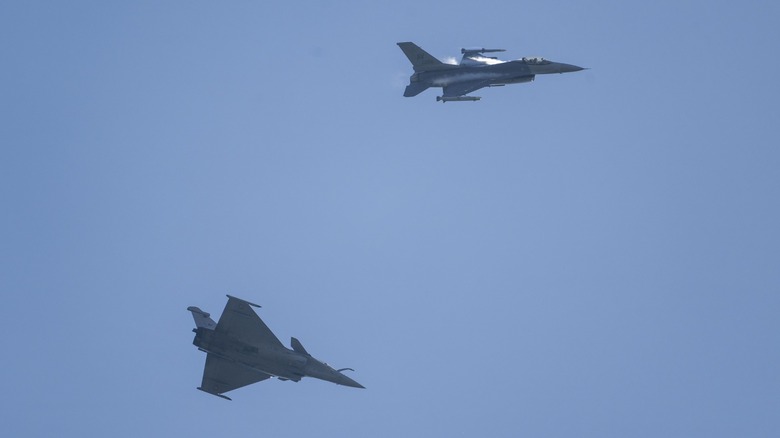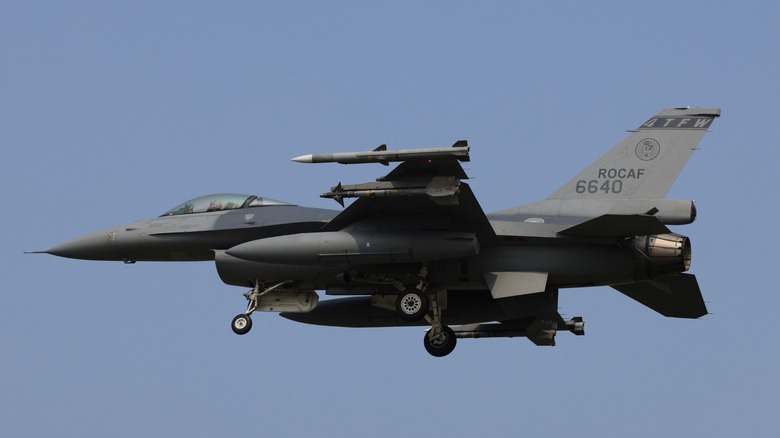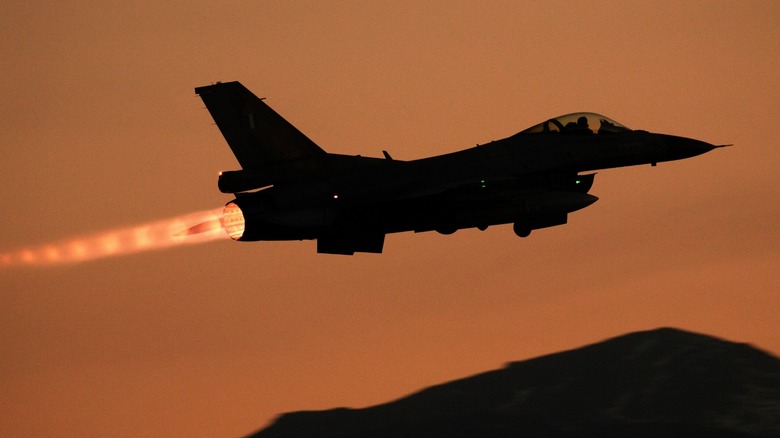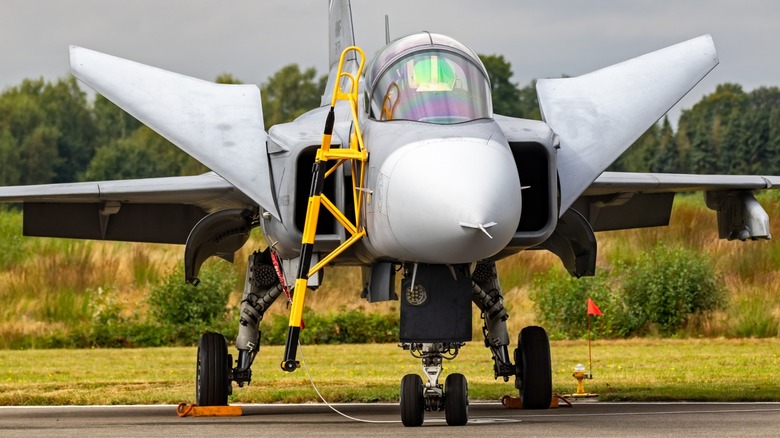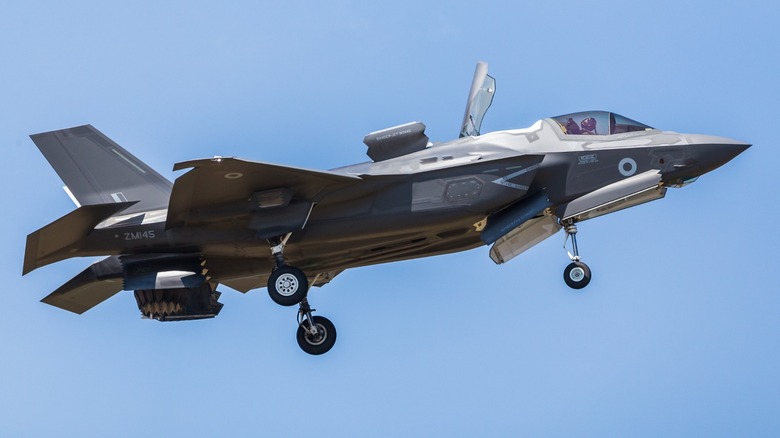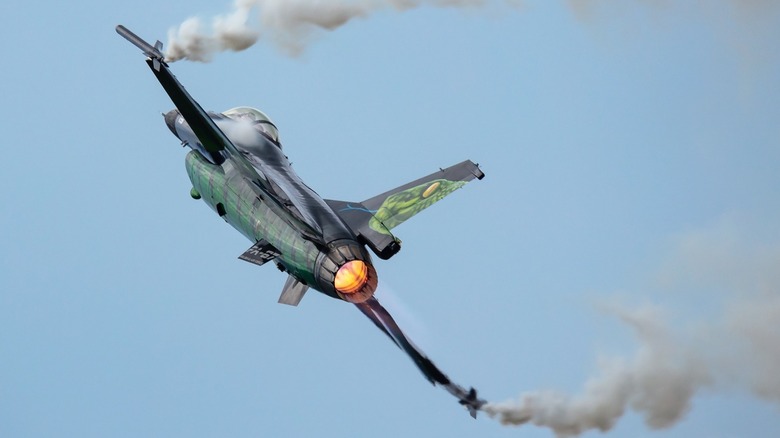How Fighter Jets Defy Gravity: The Science Behind Their Aerodynamics And Maneuvering Capabilities
We've all seen airplanes fly straight and level, ensuring their passengers are comfortable and helping keep everyone safe as they go from one point to another. However, you don't want safe, predictable flight if you're in a fighter jet. After all, your ability to maneuver and keep the enemy guessing what you will do next is crucial for survival.
Fighter planes are another breed altogether. While, they will fly straight and level, they can also do loops, make tight turns, and perform other stomach-churning stunts without breaking a sweat. But why can't planes, like the large passenger airliners we see at the airport, do that? How does a fighter plane do all those things without falling apart?
Let's look at the science behind aerodynamics and maneuvering capabilities of fighter planes and see how they accomplish all those things without tearing themselves apart. And while we'll primarily look at fighters, you should also know that these principles also mostly apply to propeller planes, even to those that have been made as far back as World War II.
Although I'm not a fighter pilot, I have flown smaller training planes, and the basic principles of flight in smaller aircraft still apply to these fast jets. Furthermore, I am familiar with some of these principles, and what not to do because the small planes I fly are not capable of handling them, but jet fighters can easily.
They have strengthened fuselage and wings
You might think an airplane won't lose its wings unless it crashes. But what you should know is that an aircraft can only take so much stress. If you stress the plane beyond its designed load factor limit, it could cause the plane to break apart in flight.
Load factor is the ratio of the total lift divided by an aircraft's weight and is measured in Gs or the force of gravity. If a plane flies straight and level, the load factor is one, because its lift and weight is balanced. But when a plane pitches up or adds engine power to increase its altitude, the load factor increases because it has greater lift. This is also true when a plane banks or turns — although it might not seem like it's adding more lift because it remains at the same altitude, the wings are also compensating for the centrifugal force applied on the plane, thus increasing its lift (and load factor) to remain on the same altitude. For example, a plane banked at 45 degrees has a load factor of 1.4G. If you increase that to 60 degrees, the load factor will go up to 2G.
Imagine a fighter maneuvering at high speeds. Since it's flying fast, the airplane likely already has a lot of lift. When you combine that with tight climbing turns, it likely is experiencing massive G forces. The Cessnas I fly only has a maximum load factor of 4.4G in the clean configuration and 3.5G with the flaps out. On the other hand, jet fighters, like the F-16 with its 9G design load factor, have strengthened wings and fuselages to withstand the much higher load factors the experience during high-speed maneuvers.
Massive engine power versus overall weight
One more thing that fighter planes need to defy gravity is a lot of speed. As Maverick said in the first Top Gun film, "I feel the need, the need for speed." These jets need it to catch their prey and escape and evade enemies when being pursued. But it's not just engine power fighter jet designers have to think about. Instead, they must consider the plane's overall thrust-to-weight ratio.
It's also not just enough to have an engine with massive thrust, instead it must balance this with the weight it's carrying. For example, passenger airliners have large engines that deliver a lot of thrust. A single GE9X engine delivers 134,000 pounds of thrust (for a total of 268,000) on the Boeing 777X. However, it also weighs a lot at 777,000 lbs., meaning it has a thrust-to-weight ratio of 0.345.
On the other hand, the F-16's single-engine only produces 29,000 pounds of thrust — but it also just weighs 23,000 lbs. with a typical combat load. This gives the F-16, which has been flying for over 50 years now, a thrust-to-weight ratio of 1.26, making it more than three times more powerful than the 777X. This high thrust-to-weight ratio allows the F-16 to accelerate quickly, letting it get in and out of trouble as fast as possible.
The use of canards
Canards are small wings typically mounted on the fuselage and placed in front of the main wing. Civilian aircraft often have these little wings, called lifting canards, to maintain longitudinal stability. This helps prevent the aircraft from behaving unexpectedly, allowing for smoother flights.
However, fighter jets, like the Eurofighter Typhoon, use canards differently. While they may still provide lift, the primary purpose of canards on fighters is to control the pitch of the plane — thus giving them the name control canards. These devices, alongside the rudder, allow fighter pilots to change where the plane's nose is pointed at quickly, making it easier and faster to aim their weapons systems.
Furthermore, control canards deliver the exact opposite of lifting canards. Instead of providing longitudinal stability, lifting canards make airplanes more unstable, making them more compliant with a fighter pilot's movements and directions. If the pilot wants to maintain level flight, the plane uses computers to control the canard, giving it longitudinal stability on demand.
Note that not all planes use canards. While the Eurofighter Typhoon, Saab JAS 39 Gripen, Chengdu J-20 Mighty Dragon, Dassault Rafale, and the Sukhoi Su-30 use these little wings, most American jet fighters don't have this feature.
Thrust vectoring engines
The primary way that an aircraft changes direction is by changing the airflow over its wings and empennage. The ailerons, which are located near the edges of the primary wings change the plane's angle of bank, allowing it to change direction. The elevators, usually located on the horizontal stabilizer, change the plane's pitch, while the rudder controls the plane's rotation about the vertical axis. These control surfaces are enough for most planes — but if you're doing dangerous maneuvers, they may not be enough. This is where thrust vectoring engines come in.
Thrust vectoring is when an airplane changes the direction of an engines output. So, instead of letting a jet engine push a plane forward, thrust vectoring could move it across different directions. This is what vertical take-off and landing (VTOL) jets like the AV-8B Harrier or the F-35B Lightning II use to take off vertically. Instead of using lift generated over the wings when a plane rolls down the runway to take off, these VTOLs use the sheer power of their engines to get the plane off the ground.
To do this, they redirect their engines downward, allowing the fan to push the plane up into the sky. When it has reached sufficient altitude, the engine output then moves horizontally, allowing the VTOL plane to fly like any other fighter jet. But aside from VTOL operations, fighter planes can also utilize thrust vectoring to execute exotic maneuvers that otherwise would've been impossible. Some of the current fighters that feature this technology include the F-22A Raptor and Sukhoi Su-37.
Deep stall avoidance
Stalling is something most pilots avoid, and we must routinely practice upset (which includes stalling) prevention and recovery to remain safe. A stall happens when an airplane's wings lose lift — usually because of the lack of airflow over the wing — causing it to fall.
Most of the best training aircraft, allow you to easily recover from a stall. On the Cessna 152, you reduce the plane's angle of attack by pushing the nose down, adding power once you've recovered some speed, and then leveling your nose to the horizon.
However, some aircraft could enter what's called a deep stall. This is when where one or more aircraft control surfaces become ineffective, making it highly difficult or nearly impossible to recover. This is usually avoided in civilian aircraft by giving them high-static stability — but this is undesirable in fighter planes, as you need instability to make them maneuverable.
You need to balance this instability with deep stall avoidance. After all, you do not want a multimillion fighter plane to be unable to recover, putting the plane and its pilot at risk. So, highly augmented fighter jets, like the F-16, typically have advanced software the prevent this from happening. Furthermore, these jets continually receive updates to ensure that any situation that could bring them close to deep stall are avoided.
These characteristics give fighters the maneuverability and speed they need to survive dogfights. And while they're mostly found in fighter jets, some propeller aircraft, like the top World War II fighters and other aerobatic planes, exhibit some of these qualities too. If you have the money and want to fly a fighter, you can get your hands on these planes, go through some training, and enjoy flying without joining the Air Force.
